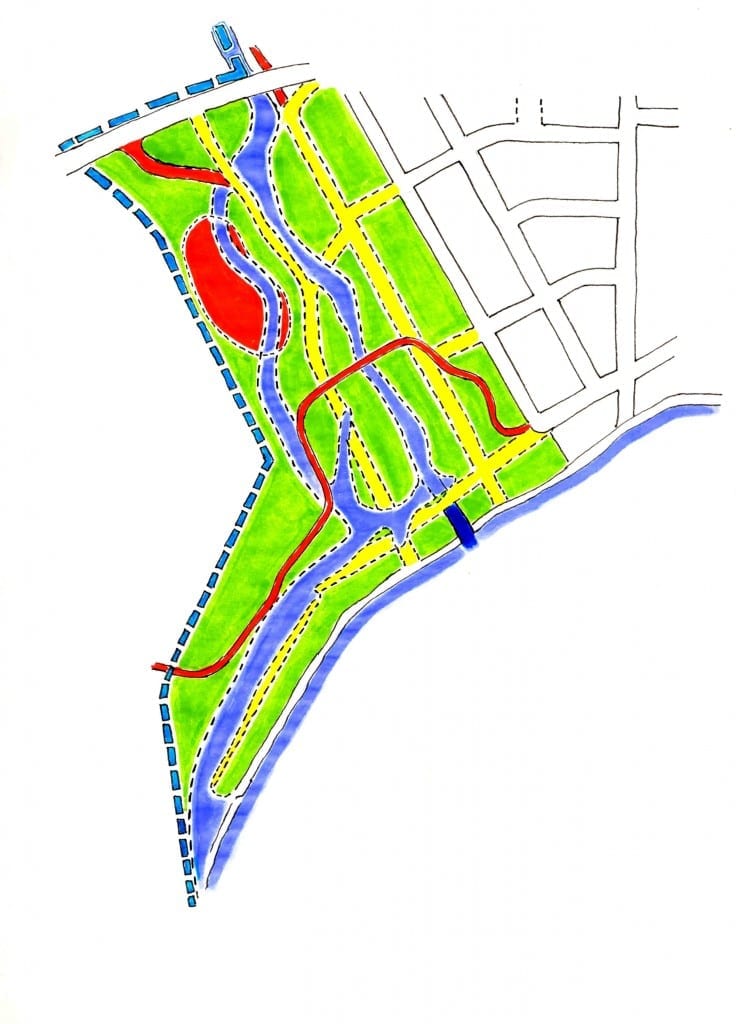Etobicoke Creek thousands of years ago gave rise to what is now an underwater valley
At a presentation I attended in Mississauga I learned about an underwater valley – now located south of the current shoreline of Lake Ontario – associated with an earlier stage in the history of Etobicoke Creek.
We know from geological evidence that, during its Glacial Lake Iroquois stage, the water level of Lake Ontario was higher than it is now.
There’s a road in Oakville, north of the Queen Elizabeth Way at Trafalgar Road, that is conveniently named Iroquois Shore Road. The road indicates where the Glacial Lake Iroquois shoreline used to be located. Evidence of the shoreline is visible across Mississauga and Toronto as well.
For example, the old shoreline is indicated by a hill that one encounters when travelling north along Avenue Road or Yonge Street when approaching St. Clair Avenue West. Similarly a hill, with a less abrupt slope is encountered, as I recall, in Mississauga when travelling north along Hurontario Street north of Dundas Street West.
An excellent account of the rise and fall of this lake is provided by John Chapman and Donald Putnam in their classic and authoritative text, Physiography of Southern Ontario, 3rd Edition (1984).
Thereafter, the water level went much lower than it is now, during what is called the Lake Admiralty phase of Lake Ontario.
During the time Lake Ontario was at a lower level, Etobicoke Creek formed a valley which is now underwater.
I look forward to learning details about this valley
In an earlier version of this blog, I wrote:
“The map below, which I’ve created to show the configuration of Etobicoke Creek in the years before and after it was channelized, provides useful information concerning the direction in which the creek would likely have flowed during the thousands of years when the water level of the lake was lower than its current level.”
The text above is based on an incorrect assumption on my part.
That is, it’s not likely that the creek has flowed in a westerly direction for thousands of years. In fact, as I understand, the flow might have been in all manner of directions over such a period of time.
We owe thanks to Robert Lansdale for sharing the fact – based on his knowledge as an engineer with direct experience with the physical features of Lake Ontario – that one cannot make the assumption that I have made in the above-noted earlier version of my text.
Robert Lansdale notes that Etobicoke Creek and the surrounding lands have changed drastically over thousands – and even hundreds – of years.
“The spit where Lake Promenade and the cottages were located,” he comments, “was mostly created via sand being dumped in this area from the Lake Ontario beach currents, such as from the Sunnyside areas and easterly. That’s what most likely caused the creek to have become diverted. ”


Leave a Reply
Want to join the discussion?Feel free to contribute!